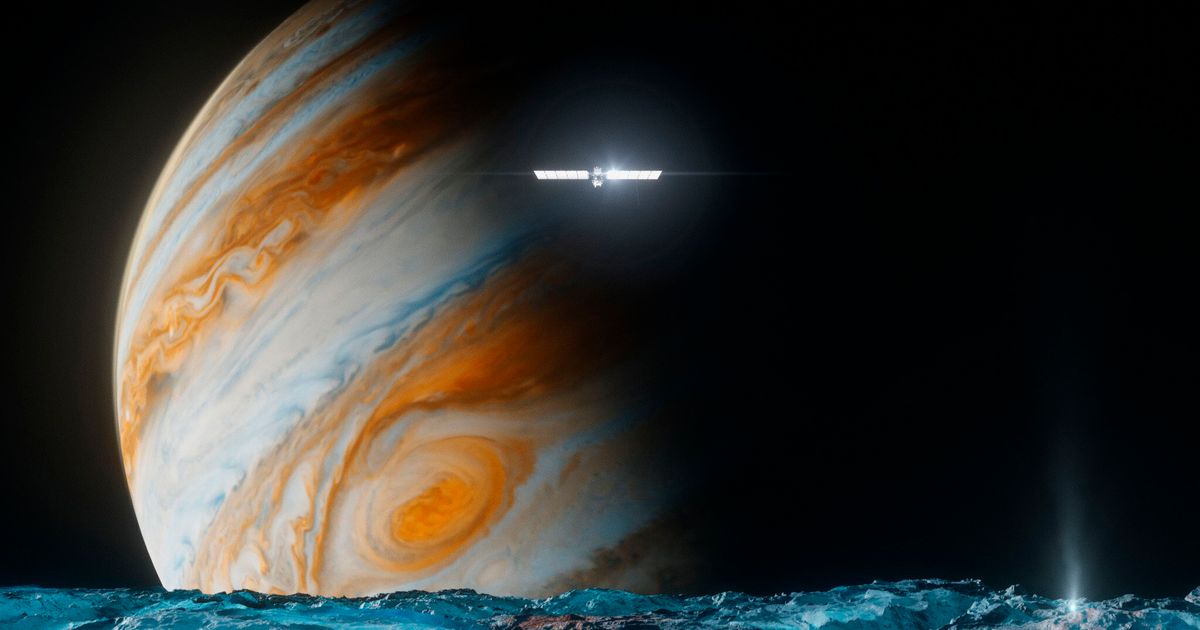While we spent our Monday mornings preparing for the week ahead, a NASA spacecraft was setting off on a quest to explore Jupiter’s Europa moon to discover whether it could support life.
It launched from Florida’s Kennedy Space Center and will now make a five and a half year journey to reach to the Gas Giant’s moon.
The Europa Moon is icy, with a deep ocean beneath it, which gives scientists hope for the possibility of life there.
NASA said: “Scientists say we should look for three key ingredients that make life possible: liquid water, chemistry, and energy. Also, life takes time to develop. We should look for life on worlds where sufficient time has passed for life to get started.
“Jupiter’s icy moon Europa may have these essential ingredients and is as old as Earth. NASA is sending the Europa Clipper spacecraft to conduct a detailed exploration of Europa and investigate whether the icy moon, with its subsurface ocean, has the capability to support life.
“Understanding Europa’s habitability will help scientists better understand the potential for finding life beyond our planet and guide us in our search.”
What will the Europa Clipper do?
According to Ars Technica: “The voyage to Jupiter will span 1.8 billion miles (2.9 billion kilometres), taking the spacecraft by Mars next March, then back near Earth again in 2026.
“These flybys will use each planet’s gravity to slingshot Europa Clipper farther from the Sun, allowing the spacecraft to take aim on Jupiter.”
Then, on April 11th, 2030, the Europa Clipper will fire its engines for six to eight hours to brake into orbit around Jupiter. Then, the spacecraft will begin a series of 49 close encounters with Europa.
The craft will never actually land on the moon, the scientists were careful to point out, with Jordan Evans, the mission’s project manager at NASA’s Jet Propulsion Laboratory explaining: “We do get as close as 25 kilometers above the surface. That’s about 16 miles. These flybys cover both hemispheres of the moon and a variety of latitudes to get us near global coverage of the moon for the science instruments.”
How very exciting. Only 2,004 days to go.
